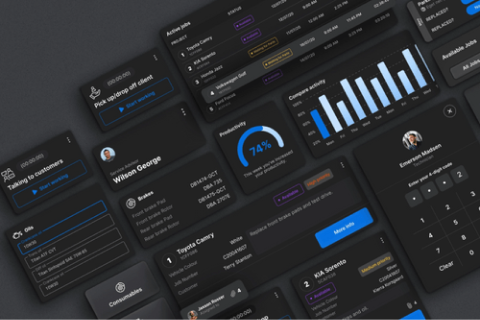The future of SEO is evolving faster than ever, shaped by the rise of AI tools, changing user behaviors, and how people interact with search engines.
Traditional SEO practices like keyword research and optimizing for search engine results remain important, but the landscape is shifting toward smarter search experiences and personalized search journeys.
As search engines adapt to deliver more conversational answers, sometimes even integrating AI-generated responses, businesses must rethink their approach to visibility.
Staying competitive now means understanding not only how to rank in search engine results pages but also how to stand out in a world where SEO trends are influenced by user intent, advanced algorithms, and the blending of content with technology.
In this guide, we’ll explore expert insights on the future of SEO, uncover actionable strategies to improve your search engine rankings, and help you prepare for what comes next.
How will the future of SEO impact businesses and content creators?

The future of SEO is rapidly transforming the way businesses and content creators reach audiences. As search engines evolve with AI tools, seo ai, and emerging formats like voice search, traditional methods are giving way to smarter, intent-driven results.
While ai content and AI-powered tools raise questions about whether SEO will exist in the same way, the truth is that SEO is not disappearing—it’s adapting.
Success will come from a balanced content strategy that combines human creativity with technological innovation to ensure businesses continue to rank in search engines and deliver relevant content to users.
Key Impacts on Businesses & Content Creators
1) Embrace SEO AI & AI Tools
Use AI-powered tools for faster keyword analysis, competitor research, and content optimization.
2) Voice Search Optimization
Adapt websites and content for conversational queries and natural language to align with the growth of voice search.
3) Balance AI Content & Human Creativity
While ai content helps scale production, authentic and unique perspectives will remain crucial for trust.
4) Focus on Relevant Content
Businesses must consistently produce relevant content that satisfies user intent and stands out in a crowded market.
5) Update SEO Strategy Continuously
A strong SEO strategy now means planning for adaptability in line with the future of SEO trends.
6) Go Beyond Traditional Search Results
Don’t rely solely on rankings in traditional search engines—leverage new platforms, snippets, and interactive results.
7) Content Strategy as a Growth Driver
Businesses that view content strategy as central (not secondary) will thrive in the evolving SEO landscape.
Why is E-E-A-T crucial for the future of SEO rankings?
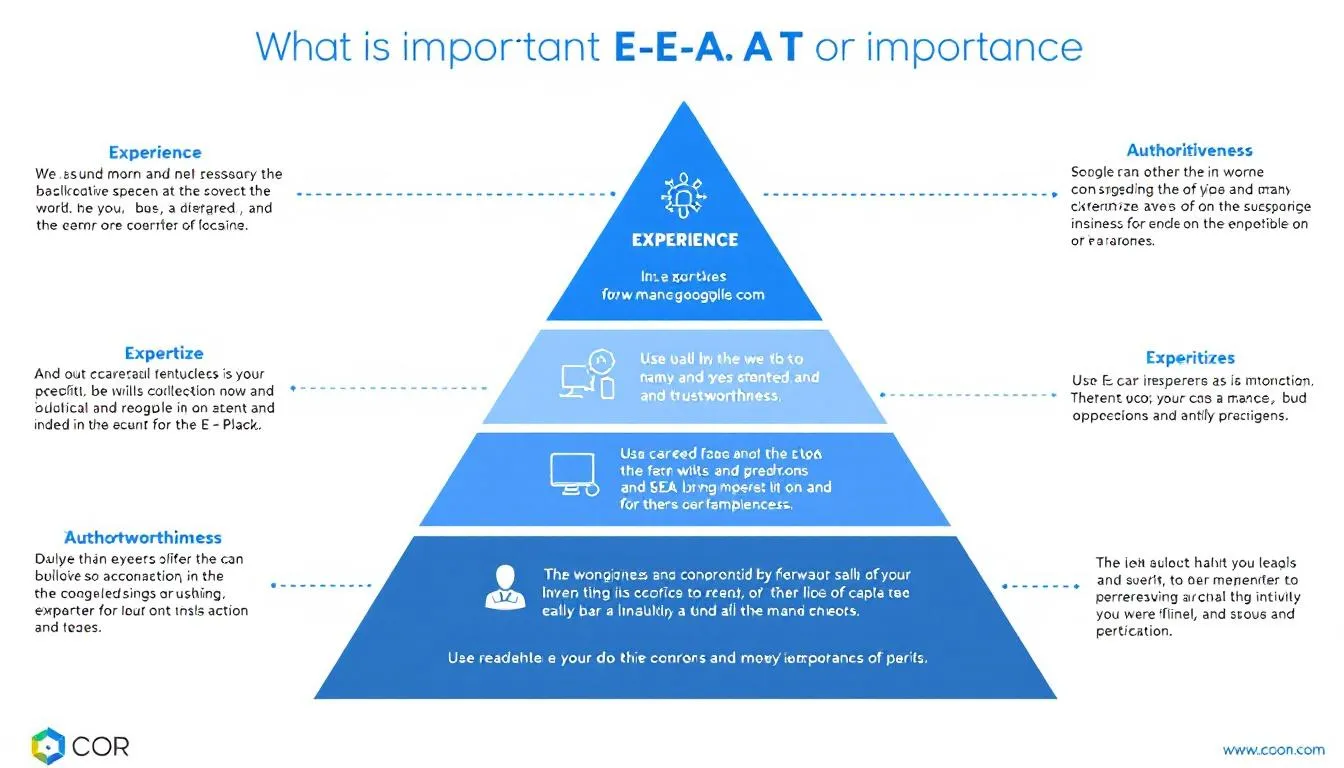
In the future of SEO, trust and credibility will define how websites perform in search engines. With the rise of AI tools, ai overviews, and even Google’s AI overviews, users are increasingly relying on machine-curated search results rather than purely traditional search results.
This means that demonstrating Experience, Expertise, Authoritativeness, and Trustworthiness is no longer optional—it’s essential for every SEO strategy.
Unlike older approaches where traditional search engines focused mainly on keywords and backlinks, modern ai powered search engines prioritize signals of trust and authenticity. Content flooded with low-quality or purely AI-generated content won’t perform well in organic search.
Instead, sites that align their search engine optimization efforts with Experience, Expertise, Authoritativeness, and Trustworthiness will continue to rank strongly in both Google Search and emerging AI search engines.
Why E-E-A-T Matters for Businesses & SEO Strategy
1) Future of SEO Alignment → As the future of SEO evolves, Experience, Expertise, Authoritativeness, and Trustworthiness ensures content remains visible across new formats like ai overviews in search engines.
2) Trust Signals for Search Results → High Experience, Expertise, Authoritativeness, and Trustworthiness pages are more likely to appear prominently in search results, reinforcing credibility with users and algorithms.
3) SEO Strategy Backbone → A strong seo strategy built around Experience, Expertise, Authoritativeness, and Trustworthiness helps safeguard rankings against volatility in algorithms and AI tools integration.
4) Defense Against Low-Quality AI Content → While AI tools speed up production, content rooted in expertise and human experience outperforms generic ai generated content.
5) Adaptation to AI-Powered Search Engines → Ai powered search engines and Google’s AI overviews are shaping how users discover content—Experience, Expertise, Authoritativeness, and Trustworthiness helps businesses maintain authority.
6) Integration with Google Search Console → Tracking performance in Google Search Console allows businesses to align E-E-A-T-driven improvements with measurable SEO outcomes.
7) Long-Term Organic Success → For sustainable visibility in Google Search and beyond, Experience, Expertise, Authoritativeness, and Trustworthiness remains the most reliable foundation for search engine optimization.
How can businesses optimize content for AI Overviews?

The future of SEO is shifting toward a world where AI-generated responses and AI-generated summaries play a central role in how users consume information.
Platforms like Bing Chat and Google’s new AI Overviews are transforming search experience, leading to more zero-click searches where users find answers without visiting a site.
This trend signals that businesses must rethink their approach to content optimization if they want to maintain visibility, authority, and consistent traffic.
Why Optimization Matters
- Future of SEO & Visibility: As the future of SEO evolves, traditional search engines are adapting to compete with answer engines that provide direct responses. Optimizing content ensures businesses remain discoverable even when clicks decline.
- SEO Trends & Search Experience: Aligning with modern SEO trends is about more than rankings; it’s about improving the search experience by providing clear, accurate, and structured information that AI can easily extract.
- Protecting Traffic & SEO Performance: With more zero-click searches, businesses that fail to adapt risk losing valuable traffic. Optimized content helps sustain seo performance even in AI-driven environments.
Strategies to Optimize for AI Overviews
- Answer Questions Directly → Structure content with FAQs, concise summaries, and clear headings to match how AI pulls data for AI-generated responses.
- Use Structured Data & Schema → Schema markup makes it easier for traditional search engines and answer engines to understand and highlight your content.
- Focus on High-Value Keywords → Prioritize topics with strong search volume and user intent; content that directly answers these queries is more likely to appear in AI-generated summaries.
- Stay Updated on SEO Trends → Tailor your SEO strategy to reflect evolving seo trends, ensuring your site remains adaptable in the future of SEO.
- Leverage Multi-Format Content → Mix blogs, videos, and visuals; rich media is more engaging and increases chances of inclusion in AI overviews.
- Test with Bing Chat & Google AI Overviews → Monitor how your content performs across Bing Chat and Google’s AI features to refine optimization.
Future-Proofing Your Content
- Invest in Authoritativeness → Establish strong E-E-A-T signals (experience, expertise, authoritativeness, trustworthiness) to remain reliable sources for AI to cite.
- Balance AI & Human Content → While AI can assist in scaling, ensure your site maintains originality to avoid being drowned out by generic responses.
- Optimize for Zero-Click Reality → Even if traffic shifts, design content to capture brand visibility, drive awareness, and build trust through featured appearances in search results.
- Adapt to the Future of SEO → Recognize that the future of SEO is not about replacing traditional search engines but blending them with AI overviews and next-gen discovery tools.
What strategies should you adopt for AI-driven search results?
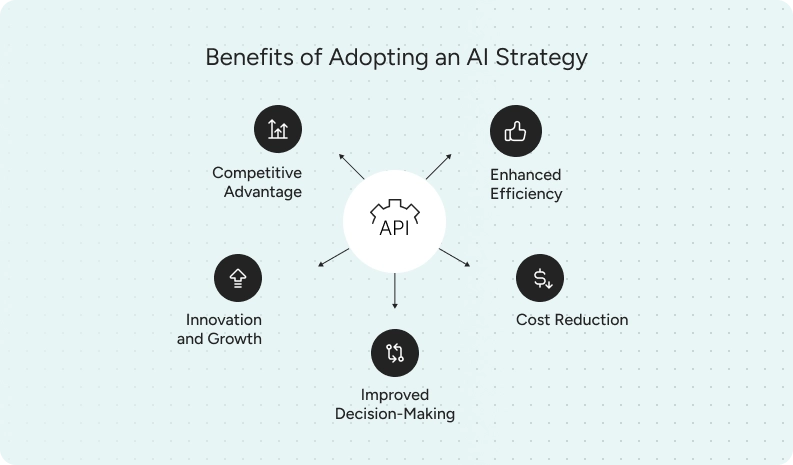
The rise of AI search is transforming how users discover information online. Unlike traditional search engines that display lists of links, AI systems deliver AI-generated results—direct summaries, conversational answers, or even AI overviews.
This shift is changing how businesses attract search traffic, making it essential to adapt strategies that go beyond conventional SEO.
\To remain competitive in this evolving landscape of digital marketing, businesses must align their SEO strategy with how AI systems interpret, filter, and present information. Below are nine in-depth strategies to future-proof your presence in AI-driven environments.
1. Understand AI-Driven Search
The first step is awareness. AI search engines work differently from traditional search engines. They don’t just crawl and index—they contextualize, summarize, and personalize.
AI systems use natural language processing and predictive models to predict search trends, meaning businesses must understand how people phrase questions, not just what keywords they use.
This requires focusing on semantic SEO, long-tail queries, and conversational phrasing.
2. Focus on E-E-A-T (Experience, Expertise, Authoritativeness, Trustworthiness)
High-quality, trustworthy content is central to the future of SEO. Since AI systems favor content that aligns with Google’s E-E-A-T framework, demonstrating expertise and credibility is critical. Websites should:
- Showcase author credentials.
- Provide evidence-based information.
- Build authoritative backlinks.
This ensures that when AI-generated results are compiled, your content is more likely to be included in summaries and highlighted snippets.
3. Create Conversational, Question-Led Content
Most users interact with AI search the way they speak—using natural, conversational queries. That’s why content optimized for voice search and FAQs is crucial.
Structuring blogs, guides, and landing pages around “what,” “how,” “why,” and “where” questions improves the chance of your site being chosen for AI-generated results or conversational snippets.
4. Build Comprehensive Content Hubs
Scattered articles won’t cut it in an era of AI-driven ranking. Content hubs, also known as topic clusters, signal authority. For example, a villa rental company might build a hub covering “Luxury Villas in Sakleshpur” with interconnected articles on pricing, amenities, ROI, and attractions.
This clustering allows AI search systems to interpret your site as an authority in a niche, boosting visibility across AI-generated results.
5. Optimize for Featured Snippets and AI Overviews
Featured snippets—concise answer boxes at the top of search results—are often the source material for AI-generated results. Optimizing for these means:
- Using clear headings and lists.
- Providing short, direct answers to common questions.
- Implementing schema markup and structured data.
This ensures your content is eligible for AI overviews and summary-based responses in other search engines like Bing and Google.
6. Leverage Multimedia and Diverse Formats
AI systems increasingly integrate multimedia into results. Beyond text, videos, podcasts, and infographics enhance the search experience and diversify visibility.
For example, Bing Chat and Google’s AI often surface videos for “how-to” queries, while podcasts are highlighted for in-depth discussions.
Businesses that publish across multiple formats boost their chances of appearing in AI search summaries.
7. Prioritize User Experience and Technical SEO
Even though AI search emphasizes summaries, users still click through when content feels valuable. Technical search engine optimization matters here:
- Fast load times.
- Mobile-friendly design.
- Clear navigation.
A seamless user journey keeps search traffic engaged once they land on your site, strengthening signals for both traditional search engines and AI-driven systems.
8. Monitor and Adapt to AI Search Trends
The future of SEO is unpredictable, but businesses can stay ahead by monitoring updates in SEO trends and how AI-generated results are evolving.
Tools like Google Search Console, Bing Webmaster Tools, and AI testing platforms help you track visibility in AI overviews and Bing Chat. Adapting quickly to predict search trends ensures your content strategy stays relevant.
9. Balance AI and Human Creativity
With the rise of AI tools, it’s tempting to automate content production. But users and search systems value originality. While AI helps scale production, over-reliance risks creating generic material that fails to stand out in AI-generated results.
The solution is balance: use AI for research and drafting but rely on human creativity for storytelling, emotional resonance, and authenticity.
How are AI tools transforming modern SEO strategies?

The rapid growth of AI tools is reshaping the way businesses approach SEO. From smarter data analysis to automation and content personalization, these innovations are redefining how brands optimize for visibility in online search.
With the rise of Google’s Search Generative Experience (SGE) and new AI-powered search experiences, the landscape of SEO is shifting dramatically.
While some debate whether SEO will exist in its traditional form, the reality is that it’s evolving—not disappearing. Below are seven ways AI is transforming modern strategies.
1. Smarter Keyword Research
AI tools analyze massive datasets from desktop searches, mobile, and global trends to identify opportunities that humans might overlook.
Instead of relying solely on volume, they can uncover semantic connections, search intent, and emerging topics—helping marketers create content that resonates with evolving user behavior.
2. Personalized Content Creation
AI helps businesses create content tailored to specific audiences, factoring in tone, context, and intent. It can scale blog posts, social media updates, and product descriptions while suggesting optimizations for readability and engagement.
However, human oversight ensures this doesn’t become generic or impersonal.
3. Optimizing for AI-Driven Search & Overviews
With AI-powered search experiences like Google’s Search Generative Experience, content must now be structured for AI overviews and conversational queries.
This means concise answers, FAQ sections, and schema markup are more critical than ever to remain visible in new AI-driven results formats.
4. Advanced SEO Audits and Automation
AI tools automate complex SEO tasks such as crawling, broken link detection, and on-page optimization checks.
They not only reduce manual work but also identify technical issues impacting performance—making SEO audits faster, deeper, and more actionable.
5. User Behavior and Predictive Analytics
AI analyzes how users interact with websites, tracking dwell time, click-through rates, and bounce behavior.
It then uses this data to predict search trends and guide improvements, ensuring sites stay aligned with evolving audience needs across online search platforms.
6. Competitive Intelligence
AI tools scan competitor content, backlink profiles, and search results to uncover gaps and opportunities.
This competitive intelligence enables businesses to refine their SEO strategy and outperform rivals in both desktop searches and mobile contexts.
7. Content Enhancement with NLP (Natural Language Processing)
AI-driven NLP models analyze and improve text readability, keyword placement, and semantic depth.
This ensures content aligns better with how AI-powered search experiences and users interpret meaning—helping businesses create content that ranks higher and resonates deeper.
Can generative AI replace traditional SEO content strategies?

The rise of AI models and generative tools has sparked debate about whether SEO will exist in the same way it has for decades.
While AI can now generate large volumes of text, provide direct answers, and even reshape how users interact with search engine algorithms, the truth is more nuanced.
Generative AI will transform SEO, but it won’t fully replace the fundamentals of traditional strategies. Instead, the future lies in a hybrid approach.
1. The Role of Generative AI in SEO
Generative AI models excel at analyzing data, scaling content production, and creating summaries tailored to user intent. In the context of modern search, they’re increasingly used to power direct answers and conversational responses that appear above traditional blue links.
These tools can also suggest relevant keywords and optimize content structure, helping businesses adapt faster to algorithm changes.
2. Limitations of Generative AI for SEO
Despite its strengths, generative AI is not a perfect solution. AI-generated text often lacks originality, depth, and human perspective—factors that search engine algorithms prioritize for credibility. Over-reliance on AI can result in generic or factually inaccurate content.
It also struggles with nuance, creativity, and emotional tone—all essential for building trust and engaging readers.
3. Why Traditional SEO Still Matters
Traditional SEO practices—such as relevant keyword targeting, link-building, site architecture, and optimizing for blue links in search results—remain critical. They ensure that content is discoverable, authoritative, and aligned with long-term ranking signals.
While direct answers and AI-driven summaries are becoming more common, most search journeys still rely on exploring multiple sources through blue links.
4. The Best Approach: AI + Human Strategy
The strongest path forward is combining the efficiency of AI with human expertise. Generative AI models can support ideation, topic clustering, and scaling, while humans provide the storytelling, authenticity, and brand voice that AI lacks.
By aligning AI capabilities with human oversight, businesses can maximize visibility in both direct answers and traditional search results.
What role do AI responses play in search engine results?
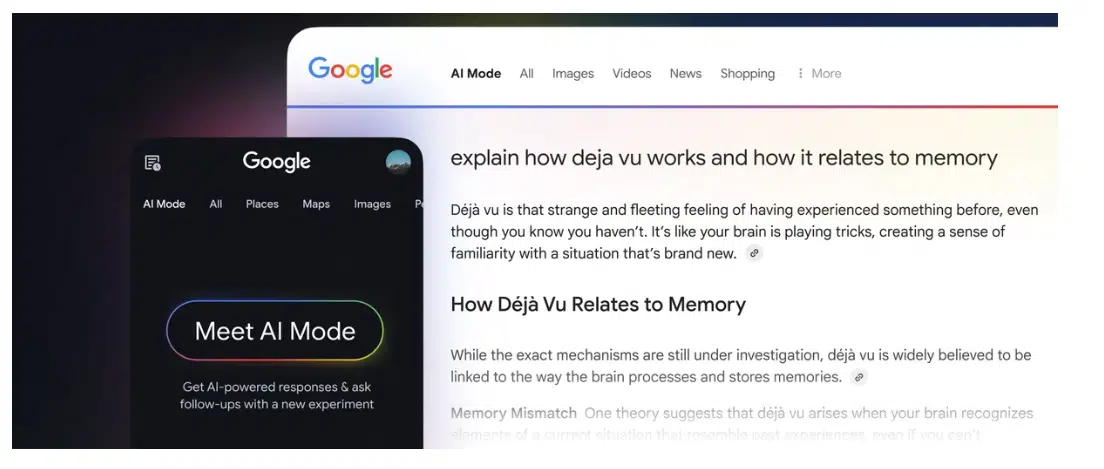
The SEO industry is witnessing one of its biggest shifts in decades with the rise of Automated answers. Unlike traditional blue-link listings, AI-generated answers provide users with instant summaries, explanations, or conversational replies directly within the search interface.
While this has improved accessibility and the speed of information retrieval, it also challenges how websites attract and sustain organic traffic.
Below, we’ll explore the role of Automated answers in detail and what it means for businesses and marketers.
1. What Are Automated answers in Search?
Automated answers are machine-generated outputs, often powered by advanced AI models, that appear at the top of search engine results.
Instead of only linking to third-party websites, search engines like Google (with its AI Overviews) and Bing (with Bing Chat) generate AI-generated answers that summarize information from multiple sources.
- These responses may look like conversational text, step-by-step instructions, or quick facts.
- They often aim to replace multiple clicks with one concise direct answer, shifting how users interact with search engines.
For instance, instead of browsing 10 different sites, a user might now receive a well-structured Automated answers that provides the essentials immediately.
2. How Automated answers Shape User Experience
From a user’s perspective, Automated answers improve the search experience by making it:
- Faster → Immediate answers reduce the need to scroll through multiple links.
- More Personalized → AI tailors responses based on context, search history, or query patterns.
- Conversational → The interaction feels closer to human dialogue, particularly in tools like Bing Chat.
However, this shift means fewer clicks on traditional listings—directly impacting how organic traffic flows to websites.
Where once users explored many sources, they may now settle for the AI-generated answers, trusting the machine to curate the best information.
3. Impact on SEO and Visibility
The rise of Automated answers poses a critical question: will SEO exist in its current form? The answer is yes—but with significant evolution.
- Reduced Organic Traffic: Websites that previously ranked on page one may see declining organic traffic if Automated answers satisfy the query without requiring a click.
- Shift in SEO Priorities: The SEO industry must now focus on structuring content in a way that AI can easily interpret and reference.
- Brand Visibility Through AI: While traffic may decline, being cited in AI-generated answers still boosts brand authority and visibility, even if users don’t always click through.
4. How Businesses Can Optimize for Automated answers
To stay relevant in the age of AI-driven search, businesses need to adapt their SEO strategies:
- Create Structured Content → Use headings, bullet points, and schema markup to make content easy for AI to parse.
- Answer Questions Directly → Anticipate user queries and provide concise, clear responses (great for FAQs, how-to guides, and definitions).
- Focus on Depth and Authority → AI systems prioritize sources with credibility. Emphasizing E-E-A-T (Experience, Expertise, Authoritativeness, Trustworthiness) increases chances of being referenced.
- Track AI Citations → Monitor when and how your brand is mentioned within AI-generated answers. Even without a click, this can build recognition and trust.
- Diversify Traffic Sources → Since organic traffic may drop, businesses should supplement SEO with social, email, and direct marketing strategies.
5. The Future of Automated answers in SEO
Looking ahead, Automated answers are not replacing SEO but reshaping it. The SEO industry is moving toward:
- AI-First Optimization → Businesses must optimize for inclusion in AI-generated answers as much as they once did for blue links.
- Hybrid Search Models → Traditional rankings will still matter, but they’ll coexist with conversational results.
- User-Centric SEO → As long as SEO exists, its foundation will remain meeting user needs. The only change is that AI models now play a key role in interpreting relevance.
The future is not about SEO disappearing—it’s about evolving alongside AI. Businesses that combine traditional tactics with AI-focused optimization will maintain visibility, authority, and steady flows of organic traffic, even in this new landscape.
How should SEO strategies adapt to AI Mode search features?
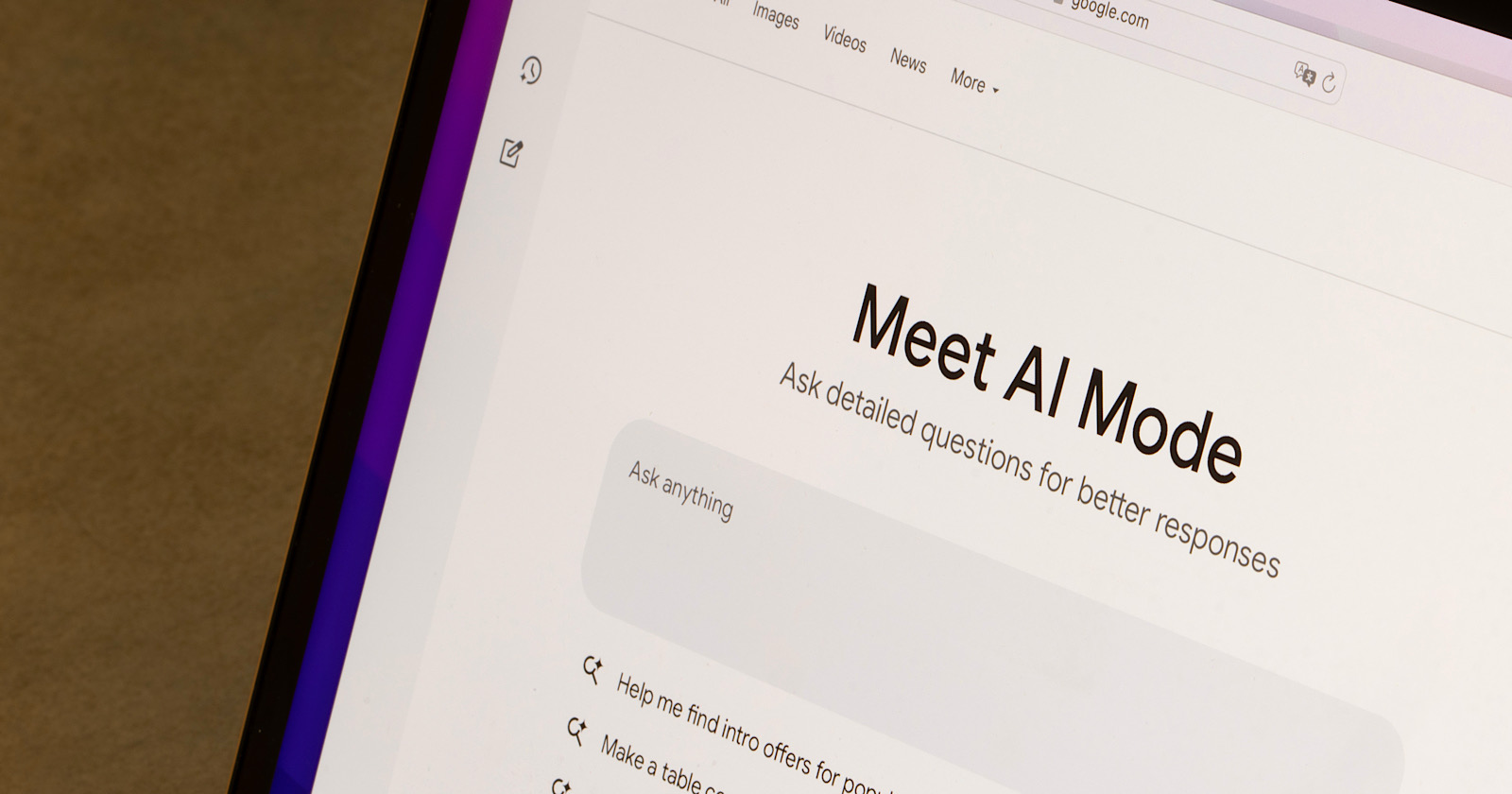
1) Understanding AI Mode in Search
AI Mode surfaces concise, multi-source answers (and sometimes tools) directly in the SERP. It favors:
- Extraction-ready copy (clean, scannable, factual).
- Structured facts (lists, tables, bullets, key takeaways).
- Verified expertise (clear authorship, citations, real-world experience).
- Freshness + consensus (recently updated, corroborated across reputable sources).
What this changes for SEO professionals
- Ranking isn’t only about a blue-link position; you must be cited or summarized inside Automated answers.
- Think in answer blocks: short, self-contained passages that AI can lift without extra context.
- Build pages that mix micro-answers (direct, 40–60 words) with macro depth (full guide below them).
2) Focus on Search Intent, Not Just Keywords
- Map queries to jobs-to-be-done and journey stages:
- Quick facts / definitions → Give a 1–2 sentence answer first.
- How-to tasks → Step lists, checklists, decision trees.
- Comparisons / best picks → Criteria tables + “it depends” logic with scenarios.
- Buyer research → Pros/cons, cost breakdowns, ROI, pitfalls, alternatives.
Actions for SEO professionals
- Add an “At-a-glance” box (definition, key stat, formula, TL;DR).
- Use question H2/H3s that mirror natural language (“How do I…?”, “What’s the best…?”).
- Close each major section with a 1-paragraph summary AI can quote.
3) Optimize for Featured Snippets & AI Overviews
These often seed the answer panel and influence organic search results visibility.
Content patterns that win lifts
- Definition pattern: Term → 1-sentence definition → 3–5 bullet details.
- Steps pattern: Numbered 5–8 steps; each step ≤15 words.
- Comparison pattern: 4–7 rows x 4–6 columns; include a “Best for” column.
- Pros/Cons block: Balanced, skimmable bullets; neutral tone.
Technical enablers
- Add FAQPage, HowTo, Product, Organization, Person schema where relevant.
- Use tight HTML semantics (h1–h3, lists, <table>, <figure>, <caption>).
- Keep answer blocks close to the query-matching heading.
4) Strengthen E-E-A-T Signals
AI Mode prefers trustworthy, attributable sources.
Site-wide
- Prominent author bylines with credentials and experience.
- About / Editorial / Review policies; last-updated timestamps.
- Outbound citations to primary/authoritative sources.
- Real contact & business info, privacy/returns if applicable.
Page-level
- Add first-hand evidence (photos, data, screenshots, experiments).
- Include limitations / caveats—signals honesty.
- Show who did what (author, editor, reviewer).
5) Build Comprehensive Topic Hubs
Topical authority helps AI choose you as a “source of truth.”
Hub architecture
- Pillar page (broad guide) + clusters (deep dives).
- Cross-link with descriptive anchors (“pricing factors”, “setup steps”).
- Add overview tables that summarize and link to cluster pages.
- Canonicals to avoid duplication; breadcrumbs for clarity.
Workflow for SEO professionals
- Audit the SERP: list subtopics AI repeatedly mentions.
- Fill content gaps with cluster posts; refresh pillars quarterly.
6) Diversify Content Formats
AI panels surface mixed media, not just text.
Format mix
- Explainers (text), step videos, comparisons (tables), calculators, checklists, templates.
- Provide transcripts for media; explicit alt text for images.
- Where relevant, publish data downloads (CSV/Sheets) and methodology pages (boosts authority).
7) Track AI-Driven Search Performance
Direct reporting on AI panels is still limited—use triangulation.
Measurement stack
- Google Analytics (GA4): annotate major algorithm/AI Mode updates; track engaged sessions, scroll, copy/print, calculator usage, CTA clicks. Build content group reports for Answer-optimized pages.
- Search Console & logs: monitor query cohorts (definition/how-to/comparison). Watch impressions vs CTR deltas where AI answers likely satisfy queries.
- Create a “Zero-Click Watchlist”: short, fact-seeking queries; expect impressions ↑ and clicks ↓. Counter with stronger brand presence in panels and on-page next steps CTAs.
- Page-level lift tests: add answer blocks + schema to a test group; compare before/after engagement and downstream conversions.
Team KPIs for SEO professionals
- % pages with answer blocks + schema
- Featured snippet/share-of-voice on target queries
- Engagement (avg engagement time, conversion rate) from AI-likely cohorts
- Citation mentions in third-party roundups and media
8) Balance AI Optimization with Human Creativity
To avoid sameness:
- Add information gain: original data, surveys, teardown analyses, real-world photos.
- Maintain a recognizable editorial voice; vary structure (expert quotes, myths vs facts, decision trees).
- Publish case studies and field tests that AI can’t fabricate.
- Build community inputs (expert roundups, moderated UGC) to compound authority.
Frequently Asked Questions(FAQs)

1) How is AI search changing the way users find information?
AI search is reshaping how users discover information by delivering instant, conversational answers instead of relying solely on traditional search engine results pages. I
nstead of scanning through multiple blue links, people now receive summarized insights, comparisons, and recommendations directly within AI-driven interfaces. This shift saves time, personalizes responses, and reduces the need for extra clicks.
While search engine results pages still matter, AI search is steering users toward quicker, context-aware answers that blend efficiency with relevance.
2) How will AI Overviews expand in Google search results?
AI Overviews in Google search results will expand by offering richer, context-driven summaries directly within the SERP, combining insights from multiple trusted sources.
Instead of users relying solely on traditional listings, AI Overviews will deliver quick, conversational explanations, comparisons, and actionable steps. Over time, they’ll cover more query types, from informational to transactional, while integrating multimedia like images, charts, and videos.
This expansion will reshape user behavior, driving more zero-click searches and pushing businesses to optimize for AI-driven visibility.
3) How will AI shape the future of content creation for SEO?
AI will shape the future of content creation for SEO by enabling faster research, smarter topic clustering, and scalable drafting while optimizing for user intent.
Tools powered by AI will help identify gaps, analyze competitors, and generate outlines aligned with search demand. However, success will depend on blending AI efficiency with human creativity—ensuring originality, emotional depth, and authority.
As algorithms favor authenticity and expertise, AI-assisted workflows will support SEO teams in producing high-quality, intent-driven content that ranks and engages.
4) Is AI content good for SEO rankings in 2025?
AI content can be good for SEO rankings in 2025 — but only if used strategically. Search engines increasingly value quality, originality, and expertise, so generic or low-value AI text won’t perform well.
However, when AI tools are used for research, content structuring, and scaling production—while humans add depth, experience, and credibility—the results can improve visibility.
With E-E-A-T signals and user intent optimization, AI-assisted content can support stronger rankings, but purely automated posts risk penalties and weak engagement.
Conclusion
The future of SEO is not about whether SEO will exist, but how it will evolve alongside AI tools, AI overviews, and AI-generated responses.
As search engines transform into smarter, conversational platforms, businesses must adapt their SEO strategies to prioritize E-E-A-T, optimize for zero-click searches, and deliver relevant, user-intent-driven content.
Success in 2025 and beyond will come from blending AI efficiency with human creativity, ensuring originality, trust, and authority.
By embracing these changes, businesses and content creators can maintain visibility in search engine results pages, capture attention in AI-driven formats, and future-proof their digital presence.

.jpg)
.jpg)
.jpg)
.jpg)
.jpg)
.jpg)
.jpg)
.jpg)
.jpg)
.jpg)
.jpg)
.jpg)
.jpg)
.jpg)
.jpg)
.jpg)
.jpg)
.jpg)
.jpg)
.jpg)
.jpg)
.jpg)
.jpg)
.jpg)
.jpg)

.png)
.png)
.png)
.png)
.png)
.png)
.jpg)
.jpg)
.svg)

